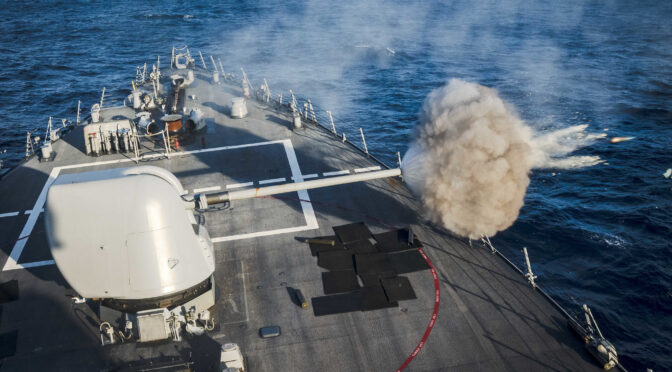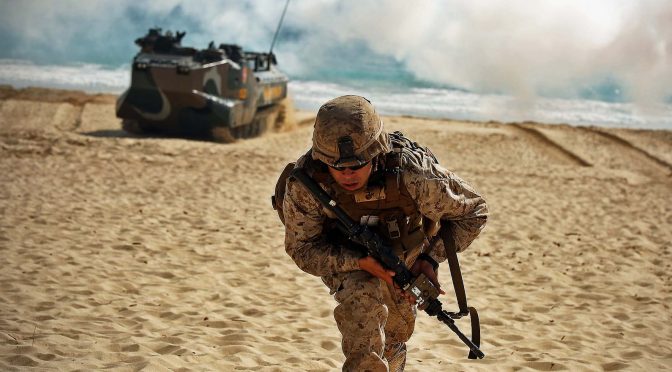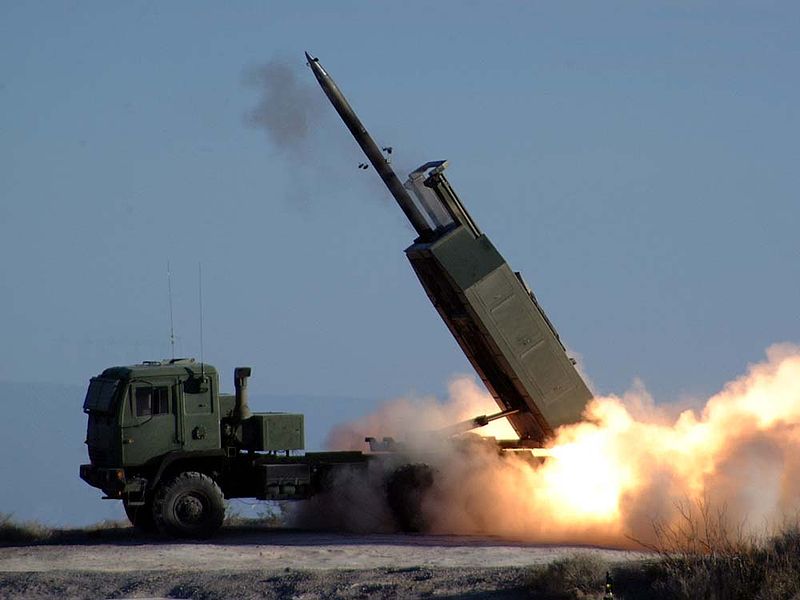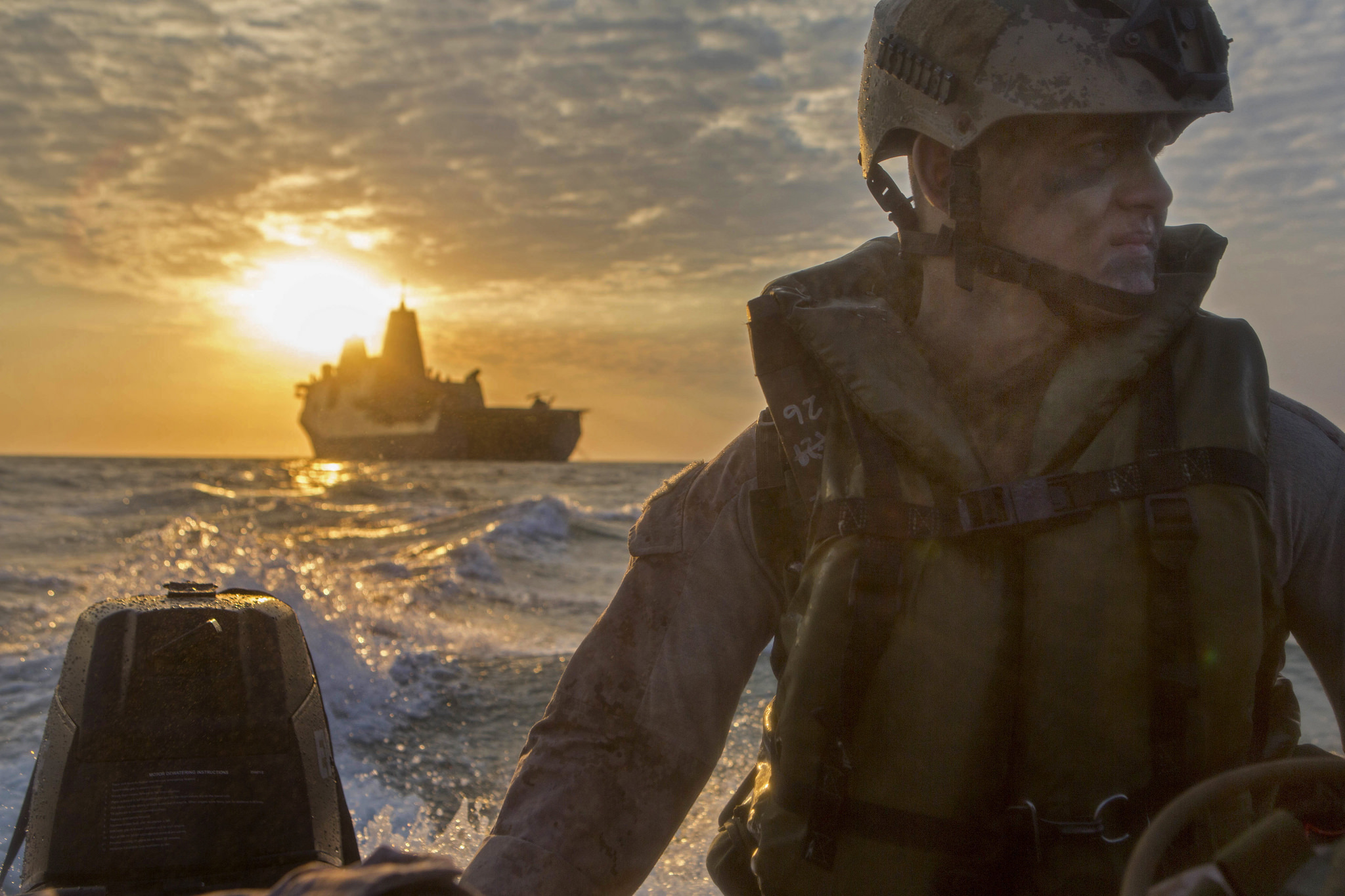By Alan Cummings
It’s no secret that a fight in the Pacific is atop the Pentagon’s list of concerns. The 2022 National Defense Strategy fact sheet explicitly states that China is “our most consequential strategic competitor and the pacing challenge for the Department.” A large part of the Pentagon’s effort to deter—and if necessary confront—China is investing in new technology to connect platforms and sensors. One of the most important initiatives is to improve joint fires as part of the Joint All-Domain Command and Control (JADC2) concept, often summarized as “any sensor, any shooter” and more recently as enabling “the Joint Force to ‘sense,’ ‘make sense,’ and ‘act’ on information across the battle-space. Speaking at the Hudson Institute in 2020, then-Vice Chairman of the Joint Chiefs General John Hyten credited JADC2 as the key to giving any element of the joint force “the ability to defend itself or the ability to strike deep into an adversary area of operations.”
While JADC2 is focused on technology, war is inherently human. This article will discuss the role of the Naval Gunfire Liaison Officer (NGLO) as one human in a JADC2-enabled theater. Any conversation about fires, lethality, and the Pacific leads either implicitly or explicitly to considerations of how naval vessels can support maneuver forces ashore. However, this legacy — maritime fires directed against terrestrial objectives — is now only one part of the equation. As concepts evolve for potential wars in the Pacific, the NGLO can provide maritime expertise that improves the integration of joint, multi-domain fires at the tactical and operational levels of war.
The NGLO Origins, Briefly
The Pacific is the birthplace of naval gunfire as a coordinated contribution to combined arms. The Marine Corps’ forward observer handbook credits Lieutenant General Holland Smith with establishing a formal naval gunfire section at V Amphibious Corps in 1943 and a companion unit for close air support training in 1944. Citing work by the historian Allan Millet, it notes that codifying the training and employment of amphibious fire support “reflected the lessons from three years of intense combat across the Pacific and formed the basis for the Marine Corps’ current procedures for controlling supporting arms.”
This NGF Section gave rise to the Shore Fire Control Party (SFCP), a small team of four or five enlisted Marines led by the NGLO (a naval officer) who can be employed as naval gunfire spotters in the field, controllers in a fire support coordination center, or planners in a headquarters element (and often all three).
The specific size, task organization, and mission of a NGLO’s SFCP has varied based on the availability of personnel and the actual tasking of the unit they’re assigned to. However, the gist has remained the same over time: a small cadre of individuals who are particularly well-versed in sea-based fire support and deployed with Marine Corps maneuver elements. In this regard, the SFCP is distinct from Air and Naval Gunfire Liaison Companies (ANGLICOs) who have a greater emphasis on close air support and are doctrinally tasked to “conduct terminal control of fires in support of joint, allied, and multinational forces,” i.e., to work for non-Marine Corps units. This distinction — NGLOs and SFCPs for Marine units and ANGLICO elements for all others — may no longer be the most efficient or effective way to coordinate joint fires in a maritime-centric environment like the Pacific. New weapon capabilities and the JADC2 concept are driving deeper integration that requires more “connective tissue” across maneuver and fires elements. While communication and data transmission are a vital part of this, it will always be necessary to have the right people in the right places at the right time. That is where the NGLO comes into play.
A New Landscape for Maritime Fires
The traditional employment of an NGLO and the SFCP is coordinating gunfire from a ship at sea in support of an amphibious operation. The principal constraint on this since World War II has been the range of a ship’s gun, such as the Mark 45 workhorse aboard U.S. cruisers and destroyers which is rated to 13 nautical miles. This is no longer the case as weapon system capabilities improve and joint warfighting doctrine evolves. A 21st Century war in the Pacific now offers three distinct categories where NGLOs have a role to play.
Maritime Fires Against Terrestrial Targets: Naval fire support against targets ashore is no longer limited to guns aboard main combatants. For instance, ANGLICO Marines in the Pacific recently executed a Tomahawk call-for-fire as part of exercise Valiant Shield 2020 and options for firing HIMARS rockets from the decks of amphibious ships were demonstrated in 2017. Future integration of conventional prompt strike capabilities from Zumwalt-class destroyers presents further opportunities to rapidly apply maritime fire power against objectives ashore. Moreover, integration of missiles into naval fire support means submarines may now be viable shooters for near-real time fire missions. Of course, this is not wholly new for the Navy-Marine Corps team. This is the traditional integration of naval fires in support of amphibious maneuver as originally envisioned. It is, however, new — or at least a reinvigoration — of capabilities for the Army. The Marine Corps is a formidable force, but any large-scale conflict in the Pacific cannot be fought by them alone. This is why, as in World War II, the Army is getting back into the island-seizing business.
Terrestrial Fires Against Maritime Targets: Until recently, this category was largely concerned with coastal defense thanks to the range and targeting limitations of shore-based fires. This is also no longer the case. The confluence of the U.S. withdrawal from the INF Treaty with the possibility of conflict in the Pacific has led the Marine Corps and the Army to express their strong interests in operating land-based, anti-ship weapons. From their perspective, this capability gives them the means to counter adversary naval forces which may threaten their operations ashore without needing to have ships on station. From the Navy’s perspective, it means Army and Marine Corps firing batteries can be called upon as part of the maritime fight in a way that they have never been before. This versatility is a mutually reinforcing and beneficial development that exemplifies the joint warfighting concepts taking shape today, enabling elements of the joint force to use cross-domain capabilities to defend themselves or strike deep as circumstances require.
Maritime or Terrestrial Fires Against Littoral Targets: This hybrid category is a distinct situation where observers on shore or near shore are directing fire from any firing unit against targets in the littorals. These engagements can be prosecuted to support maritime objectives like chokepoint control, or terrestrial objectives like countering adversary amphibious assaults. This is especially relevant as tactical drone aircraft proliferate across the battlefield, greatly expanding the sensor envelope of forward observers and turning small islands and coastal enclaves into viable observation posts.
Okay, But Why The NGLO?
As it stands now, most NGLOs are drawn from the surface warfare community. Their greatest strength is their familiarity with the shipboard operations and the maritime environment. Just as artillery forward observers learn how the gunline works as part of their professional development, NGLOs come to the table as warfare-qualified naval officers who have already gained significant understanding of how a ship operates when providing fire support. This gives them a clear advantage in planning, supervising, and conducting fires that originate from naval platforms. Similarly, their broader experience at sea is valuable insight about how ships operate in the maritime environment and is uniquely relevant when terrestrial fires are being directed against naval and littoral targets.
One thing NGLOs are not: a substitute for ANGLICO Marines or other personnel with advanced fire support certifications like Joint Terminal Attack Controllers (JTACs) or Joint Fires Observers (JFOs). While these personnel can and should be versed in naval fires, and may also count NGLOs in their ranks, their mandate is often broader. This requires a greater investment in training and results in them becoming notoriously high-demand, low-density assets. A “grunt” NGLO specifically, and SFCPs more broadly, are a supplement that eases the burden on these high-demand personnel. This has typically been a consideration within the Navy-Marine Corps team, but it is shaping up to take on new urgency as Army units increase the demand signal for both receiving and providing naval fires.
Embedding NGLOs with ground units has obvious value for the Army and Marine Corps who benefit from improved planning and execution of naval fire support; but, sending NGLOs to these ground units also benefits the Navy. This is most apparent when terrestrial fires are directed against maritime and littoral targets: naval officers at the firing unit or higher headquarters can provide real-time context and nuance to commanders in a way that fire support requests, the joint target list, and operation orders cannot. In more deliberate scenarios, these NGLOs have professional networks and reach-back capabilities that are reciprocated as touch points for the fleet with ground force staff— all of which facilitates and improves the planning process. At a more fundamental level, officers returning from NGLO tours bring unique perspective to the fleet that, especially in wartime, can prove invaluable to every echelon from the individual warship to fleet staffs.
There are numerous opportunities to integrate NGLOs and NGLO-qualified officers with Army and Marine Corps units. The most straightforward billets are the traditional ones currently embedded with Marine Corps infantry and artillery units. Depending on task organization, this can be an NGLO and SFCP assigned to the Weapons Company in general support of a battalion or a distribution of naval gunfire observers across three to four company-level fire support teams. In time of war, this can and should be replicated with their Army counterparts at least at the battalion and brigade level if not lower. Short of war, the Navy and Army should cooperate to establish joint duty assignments for NGLO-qualified officers at the infantry division level, with the Army’s fire support training enterprise, and with the Navy’s Expeditionary Warfare Training Groups in order to begin building procedural and doctrinal familiarity.
Separately, if replacements for PCs and Mark VI patrol craft are fielded, those officers and Sailors should be given formal training on naval gunfire procedures. Ideally, the officers would be fully-qualified NGLOs; however, this may not be feasible under current peacetime requirements. Similar consideration should be given to training the crews of allied patrol craft as well as U.S. small and medium-sized Coast Guard cutters that may be deployed to the theater in time of war. As land-based anti-ship capabilities evolve in the Army and Marine Corps, patrol crews operating in the littorals may become some of those best positioned to call for and deliver indirect fires against maritime and littoral targets.
To do this well, the Navy’s surface officer community will have to put greater value on joint combat experience (as opposed to high-echelon staff tours) as part of its personnel management. The community’s number one goal is to prepare and select the best officers for command afloat while filling key operational billets. This is the driving force behind the ideal career path that is heavily centered on grey-hull, blue-water tours. This is a reasonable approach that has been largely sustainable (though arguably sub-optimal) in the post-Cold War era. In a wartime Pacific, the surface Navy will face a hostile environment that it has not truly wrestled with for nearly 80 years and, furthermore, will be depended upon for an unprecedented level of wide-spread fires integration. This is to say that the surface Navy will not be able to fight alone, a statement that is neither new nor surprising. But, in execution, the community will have to improve the way it values joint warfighting tours like NGLOs—similar to aviators in JTAC tours— because, even if they are not blue-water themselves, they provide a key linkage that enables the surface fight.
Conclusion
NGLOs are not a panacea to the enduring complexities of integrating multi-domain fires. They are, however, a uniquely valuable member of the fire support community. As the overarching JADC2 concept emphasizes, joint integration and cooperation is the name of the game. If war comes in the Pacific, NGLOs are a human advantage and an economy of force that the Navy can contribute to the joint fight. By leveraging a relatively small number of personnel placed in key positions, the Navy would improve the effective integration and delivery of naval fire support and increase the benefits it derives from new shore-based maritime fires.
Alan Cummings was an active duty Naval officer for ten years, including as an NGLO with 10th Marine Regiment and Battalion Landing Team 3/8. He continues to serve in the Navy Reserve. He is indebted to the Marines of his SFCP—Nick Ingmire, Mark Olsen, R.T. Fullam, and Richard Barcena—for all they taught him. The views expressed here are solely his and do not reflect the official positions of any organization with which he is affiliated.




